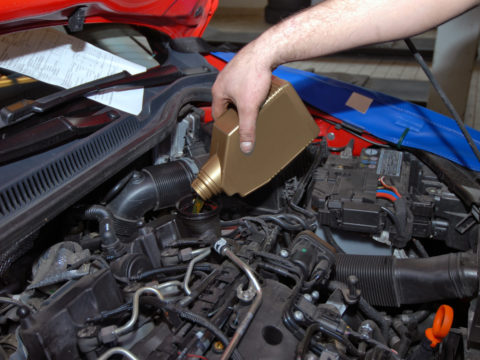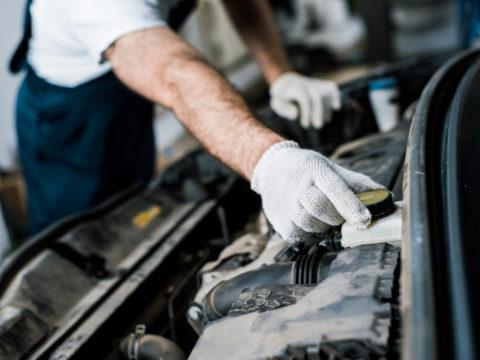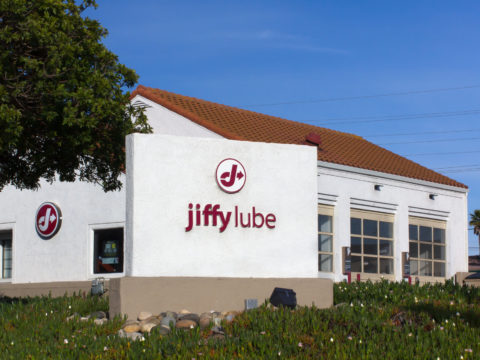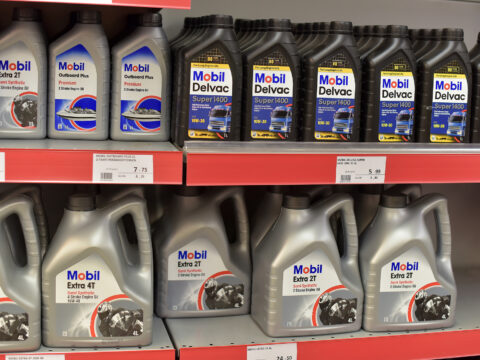SAE 30 and 10w30 are both good choices for motor oil. SAE 30 works well for older cars and for people that live in warmer climates, while 10w30 is great for varied temperatures or year-round use. There are many similarities and there are some big differences that may impact the way they work for your vehicle.
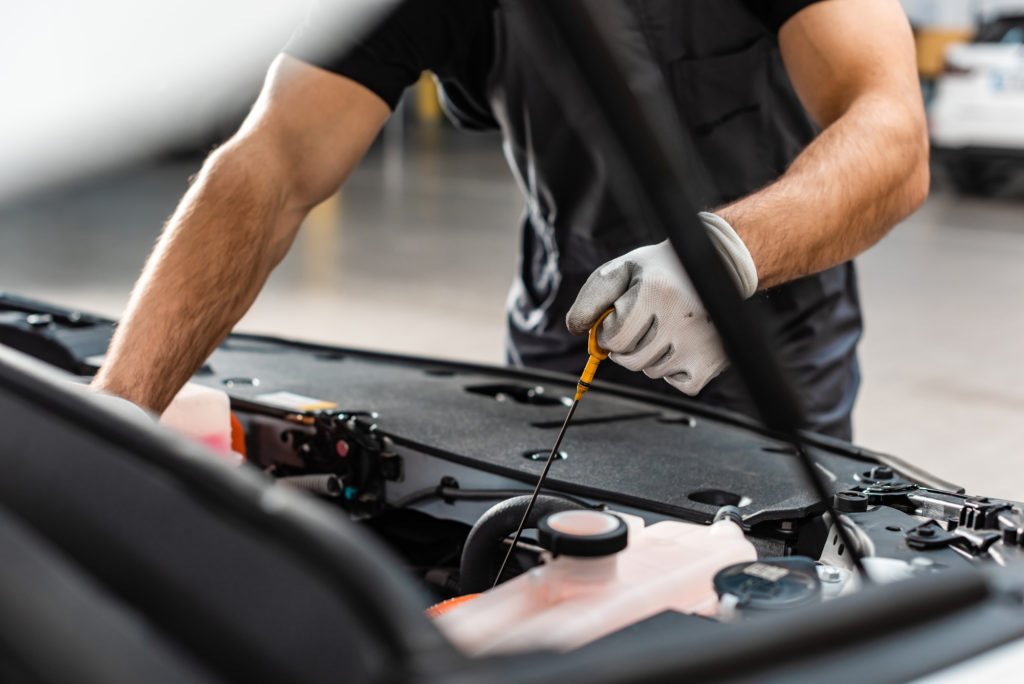
Contents
Is SAE 30 the Same as 10w30?
The biggest difference between these two oils is the viscosity. That means they both flow differently when exposed to rising and falling temperatures. SAE 30 is thick. It is not going to flow at the same rate as the other. 10w30 is thinner, and while being able to perform similarly at higher temperatures, it has also been tested at low temperatures.
What Does SAE 30 Mean?
SAE stands for the Society of Automotive Engineers. They developed the classification system based on the viscosity of oil that everyone uses. Motor oil usually has a viscosity rating between 0 and 50. So, SAE 30 means that this oil has a viscosity of 30 based on the system the SAE has put in place. That is a high enough rating for most motor vehicles like cars and trucks.
What Does 10w30 Mean?
10w30 is thinner than SAE 30. The “30” means that it has the same viscosity as the other when the engine is hot. However, since it is thinner, it will never become as thick as SAE 30 when it gets cold. 10w30 has a viscosity of 10w which means it will start moving and protecting engine parts at a colder temperature. That is very important for people that live in areas that have cold winters.
SAE 30 and 10w30 Oil Differences Explored
While there are many similarities between these two products, they are used differently in many ways. They each have properties that make them more acceptable for one job than the other.
Notable SAE 30 Oil Features
SAE 30 is a very commonly used and fairly inexpensive oil. Below are some of the facts that you should consider before choosing it.
Overall Performance
Most people who use SAE 30 are pleased with it. It is a little more expensive but will protect your engine even when experiencing prolonged exposure to high temperatures.
Composition
Many oils contain detergents that have additives that trap dirt and help to keep the engine free of sludge in between changes. Some car owners do not like detergents as they feel they do more harm to the car than good. If the oil that you are buying is not labeled detergent-free, you are probably buying one that is not.
Oil Pressure
SAE 30 oil can withstand a good deal of pressure. It has been tested for long periods in extreme temperatures up to 212℉.
Viscosity
SAE30 has a viscosity rating of 30. That means that it flows well enough in the average car or truck in warm or hot weather. It can hold up to the rising temperature of the engine. And it will help protect it from the friction caused by its moving parts.
Operating Temperature
SAE 30 has been rated for hot viscosity. That means that while it might work in your car in cold weather, there have been no tests to prove it. It will reach its viscosity peak at around 212℉ but will break down once the engine temperature reaches 250-260℉. After that point, the engine will overheat. The oil will have to cool down before continuing.
SAE 30 does not have the best profile for cold weather. It is best to use it in the warmer months.
Average Price per Quart
As with any product, the brand name says a lot about the price. It may also say a lot about the quality. If it is made by a company you have never heard of, do some careful research. A quart made by some well-known companies will cost between $10-$15.
Notable 10w30 Oil Features
While 10w30 is one of the most popular types of oil on the market, consider these factors before choosing to use it.
Overall Performance
10w30 works great at high temperatures for a long time. It also has low viscosity when it is cold. That makes it a good choice for people who live in an area with a varied climate. If you wear a sweater in the morning but you have shorts on by afternoon, then this might be the one for your vehicle. It will not thicken up and keep your engine from turning over when it is cold.
Composition
10w30 is available as conventional motor oil as well as synthetic. Conventional has a base of crude oil mixed with some additives. Synthetic oil tends to outperform those and protects the engine over time.
Always be sure to change the oil filter at the same time as the oil. That will help to keep any buildup from additives causing problems in your car later.
Oil Pressure
10w30 is thinner than SAE 30, which means it will not create as much pressure, giving your engine a longer life.
Viscosity
Both of these oils have the same viscosity in high temperatures. When the engine is cool the 10w30 will not thicken up as much as the other. And when the weather is cold, 10w30 will circulate and help your engine get started a lot quicker.
Operating Temperature Range
10w30 is optimal in a hot engine up to 212℉. Just like SAE 30, it will begin to break down at about 260℉. However, because it is thinner it can remain viable in cold weather down to 13℉. So in winter it will give you a smooth startup and keep you running.
Average Price per Quart
10w30 is inexpensive, which is one reason why it is so popular. Many brands are under $5. Consumers can expect to pay between $5-$10.
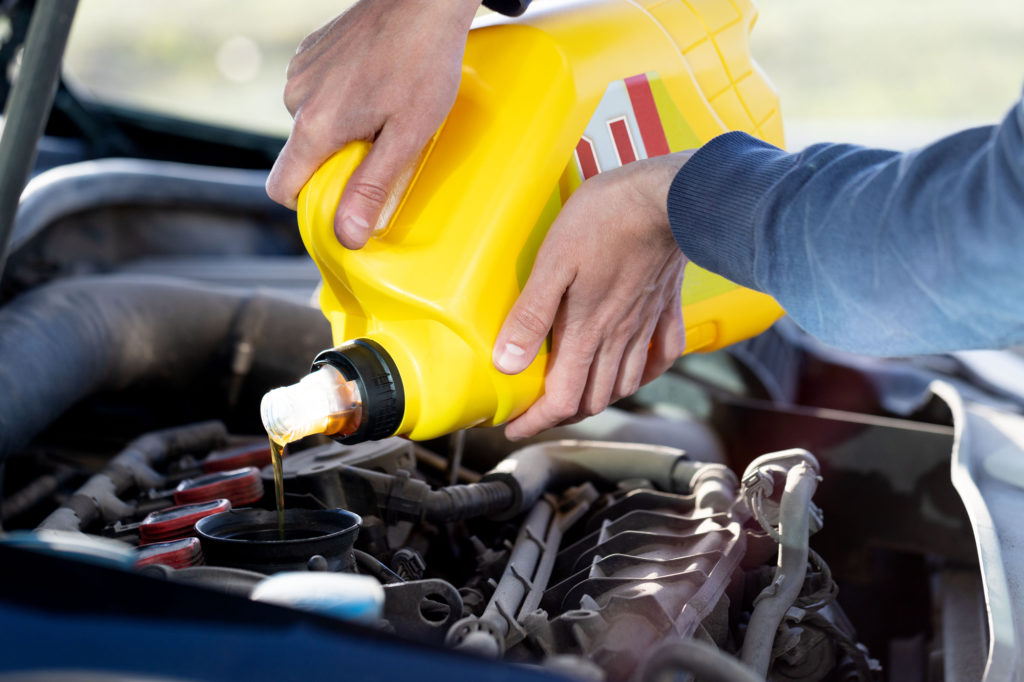
Pros and Cons of SAE 30 and 10w30 Oil
| Pros | Cons | |
| 10w30 | Low viscosity in cold temperatures | Not as optimal in warmer weather |
| Works well in high mileage vehicles | Does not offer as much protection to older vehicles | |
| Slightly less expensive | Not as good for small engines | |
| SAE 30 | High viscosity helps protect older engines | Puts drag on the engine causing it to slow down |
| Good for small engines (Lawn Mowers) | Not optimal for new cars | |
| Works well in high temperatures | Does not work as well in winter |
When To Use SAE 30
If cold weather is not a factor, then SAE 30 will be a good option any time. It is also a good option if the vehicle is older because the thicker oil will help to protect the older parts.
When To Use 10w30
If the weather is constantly changing or the winters are particularly cold, 10w30 will be a better choice.
So, Should You Use SAE 30 or 10w30?
Unless you are going to be in a colder climate, there is not much difference between the two. For smaller engines, such as lawnmowers, 10w30 will work better because SAE 30 may be too thick for their parts.
If your car is older, you might want to consider using SAE 30 in the warmer months and swapping to 10w30 when the weather starts to change. That will give you the benefit of the protection that the thicker oil gives to the moving parts of your engine while also taking advantage of the lower viscosity in the cold weather.
Our Recommended SAE 30 and 10w30 Oil Brands
If you are looking for SAE 30 oil then the three top brands are:
- Valvoline Daily Protection
- Quaker State Peak Performance
- Pennzoil
For 10w30, you can not go wrong with the following:
- Valvoline High Mileage
- Castrol GTX
- Quaker State All Mileage
FAQs
Which is thicker, SAE 30 or 10w30?
SAE 30 was designed to perform best in warm weather. The oil is thicker and thins out as it warms up and flows through the hot engine.
Can I use 10w30 instead of SAE 30 in my lawnmower?
Yes, both are suitable for lawnmowers. If your mower is older, the SAE 30 will offer more protection. Some small engines may have a hard time with the thicker oil. With smaller engines, it is best to consult your owner’s manual before changing the type of oil that you are using.
Can you mix SAE 30 and 10w30?
Yes. Any SAE graded motor oil can be mixed.
Conclusion
The most important thing to remember is that any oil is better than no oil at all. SAE 30 and 10w30 are both good choices for your vehicle and they will both give your vehicle a longer life. But if you want optimal performance and a smooth drive all year, be sure to get the oil that suits your needs depending on the car’s age and the climate where you are.

